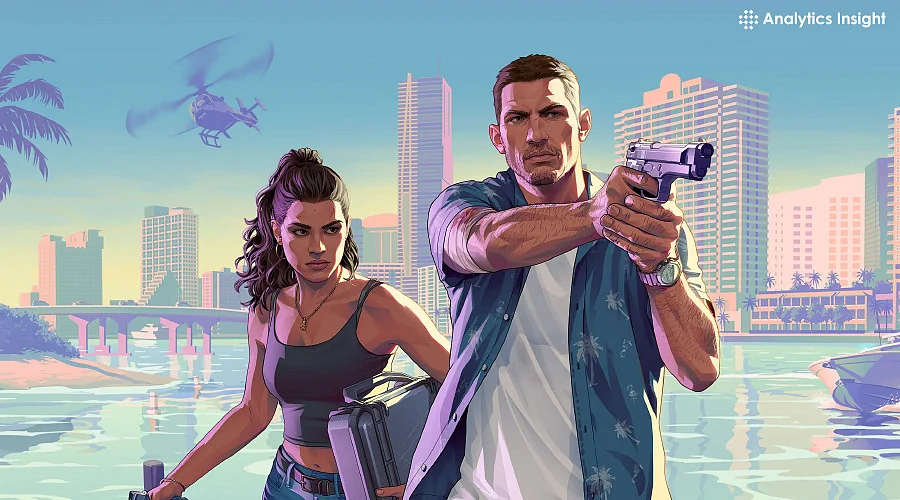
5 Features GTA 6 Must Revive for the Ultimate Nostalgic Experience
The Hidden Reason Modern GTA Games Feel Empty Compared to These Classic Elements
Key Takeaways
Rockstar removed systematic depth for cinematic spectacle, losing what made GTA genuinely addictive for players
Red Dead Redemption 2 proves Rockstar still understands systematic gameplay but refuses to apply it
These five features represent the difference between good games and legendary franchises that define generations
GTA 6 could resurrect the franchise's forgotten golden mechanics. The leaked trailer shows characters openly carrying weapons, signaling Rockstar remembers what made early titles legendary. Combat remains central, but deeper systems defined the franchise's true identity. These mechanics created lasting emotional connections with players worldwide.
Modern gaming trends favor spectacle over substance in open world design. The development spans over a decade, suggesting Rockstar studied what fans truly miss from classic entries. The most requested GTA 6 features aren't graphics upgrades. They involve gameplay systems that created genuine addiction and countless hours of post story engagement.
Reclaim the Streets: Bringing Back Territory Control
Gang warfare made players feel like criminal masterminds building real empires. Remember Grove Street versus Ballas? CJ recruiting homies, rolling up on enemy blocks with AK-47s blazing while Sweet shouted "Grove Street for life!" This GTA nostalgia represents what made the franchise special during its golden era.
Something changed after San Andreas success though. Gang warfare completely vanished from subsequent titles without explanation. Later games had occasional territory disputes, but nothing systematic remained. Franklin started in gang life but never expanded Grove Street's influence beyond scripted missions unfortunately.
Vice City's cocaine cartels offer perfect gang warfare opportunities for modern implementation successfully. Players could build drug empires across different neighborhoods while recruiting lieutenants for protection. Modern graphics would show bullet holes scarring buildings permanently while gang members remember past battles and earned reputations.
Also Read: How to Turn Your Images Into GTA 6 Art Using AI: ChatGPT, Gemini and More
Three Cities, Endless Possibilities: The San Andreas Formula
Multiple cities created the ultimate GTA experience in gaming history for dedicated players. Los Santos beaches, Las Venturas neon strips, San Fierro's winding hills felt like discovering new countries within one game. The anticipation of unlocking Ganton Bridge was intense while reaching the casino filled desert brought genuine excitement.
Recent titles abandoned this approach for single massive cities instead of variety unfortunately. While technically impressive, this eliminated what made San Andreas unforgettable for millions of players worldwide. Players lost the thrill of traveling between dramatically different environments and cultures completely without proper replacement.
Multiple Vice City districts would offer distinct criminal experiences again perfectly for players. Miami Beach's art deco glamour could house different mission types while Everglades swampland brings mysterious storylines naturally. Each area would host different criminal organizations with unique vehicle types and specialized mission structures.
High Risk, High Reward: The Chinatown Wars Economy
Drug dealing mechanics transformed GTA into a criminal business simulator perfectly. Huang Lee's PDA constantly buzzed with price updates across Liberty City boroughs while acid sold high in Broker. The rush was incredible when carrying maximum product through rival territory, knowing one police encounter could destroy hours of profit.
Subsequent GTA games simplified money making to property income and heist payouts exclusively. The dynamic economic system completely disappeared from later titles while linear mission rewards replaced complex profit strategies. Players lost the strategic depth of managing criminal enterprises independently.
GTA 6 could introduce cartel supply chains across Vice City districts seamlessly. Players would monitor cocaine shipments arriving from South America while establishing distribution networks. Price fluctuations could depend on police crackdowns and rival gang interference, making economic warfare as important as gunfights.
Pure Chaos: When GTA Embraced Its Destructive Nature
Rampage missions celebrated everything that made GTA rebellious and addictive for players worldwide. The rampage icon appearing on radar created instant excitement while grabbing rocket launchers, flamethrowers, or miniguns felt empowering. Pedestrians scattered frantically as buildings exploded and cars launched skyward during timed destruction sprees.
Modern GTA titles removed dedicated chaos missions from their design philosophy completely. Destruction became integrated into story contexts instead of standalone experiences while eliminating raw consequence free violence. Players lost designated spaces for unleashing maximum destruction without narrative weight or moral complexity.
Vice City's rampage missions could utilize modern physics engines for spectacular results perfectly. Demolishing cartel compounds with explosives would create massive destruction while highway pile ups involve dozens of vehicles. Time limits would add pressure while environmental destruction creates visual spectacle impossible previously.
Endless Adventures: Side Jobs That Never Got Old
Service jobs created the most underrated gameplay loops in GTA history for dedicated players. The taxi's CB radio crackled with fares across Liberty City while ambulance sirens wailed toward accident scenes. Police scanners dispatched vigilante missions against dangerous criminals while fire trucks raced through traffic toward burning buildings.
Later GTA games replaced these systematic jobs with smartphone based activities and random encounters unfortunately. While more realistic for modern times, this eliminated the progression and character development these jobs provided originally. Players lost the satisfying grind of building skills through repetitive yet rewarding work.
GTA 6 could modernize these systems with Vice City's unique opportunities perfectly for players. Coast Guard rescue missions during hurricane seasons would add weather dynamics while DEA undercover operations blend with drug dealing mechanics. Each job type could unlock new areas, contacts, and storylines organically.
Conclusion
These five GTA features created gameplay loops that kept players engaged long after story completion naturally. Modern games prioritize spectacle over systems, missing the addictive mechanics that made earlier titles genuinely timeless. Interestingly, successful games like Red Dead Redemption 2 prove Rockstar still understands systematic depth when they choose to implement it. The hunting, fishing, and camp management systems mirror what made classic GTA special.
GTA 6's success depends entirely on reviving these elements with contemporary polish while maintaining their original addictive qualities that created lasting player engagement.
Also Read: 5 Features GTA 6 Needs to Borrow from Red Dead Redemption 2
